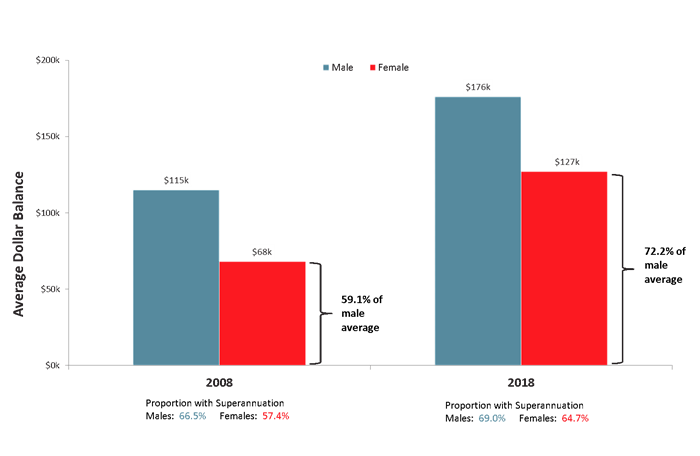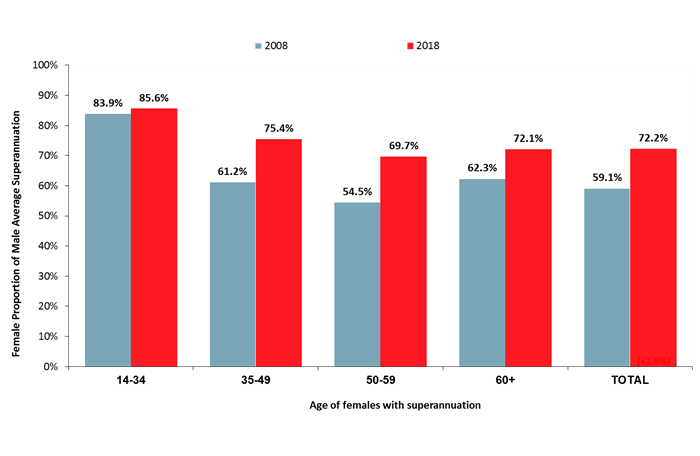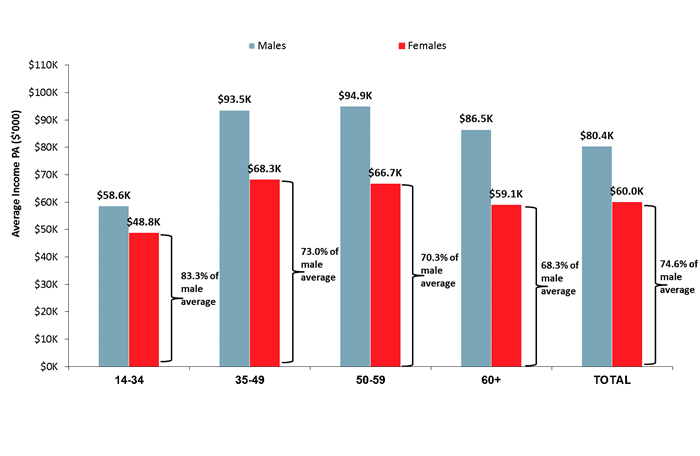The difference a decade has made on the super gender gap

It’s 2018, but women are still playing catch-up to men in a number of ways – including their superannuation account balances.
The good news is the last ten years has seen the super gender gap slowly but surely narrow, according to new figures by Roy Morgan.
Also read: These are the best countries to live and work in
Average Superannuation Balance and Ownership Level – Males vs Females

The gap has more than halved from 9.1 per cent to 4.3 per cent since 2008 – but the average woman still has almost 18 per cent less in their super accounts than her male counterparts.
To break it down further, Roy Morgan found different age groups made varying levels of progress in bridging the gap.
The gap is narrowest at the start of people’s careers (1.7 per cent) and widest just before retirement (15.2 per cent).
Average Female Superannuation as Proportion of Male Average by Age

Also read: How big is the gender pay gap in your sector?
Roy Morgan industry communications director Norman Morris said “good progress” had been made, but that “it still has a long way to go”.
More specifically, women’s super isn’t quite matching up to men’s because there are various factors affecting women’s employment, such as interrupted work and lower average incomes due to part-time work.
Average Income of Workers with Superannuation – Males vs Females

“Despite real gains in employment for women over the last decade, they still lag men in terms of full time employment and as a consequence a greater proportion of women are in part time work with its associated lower annual income,” Morris said.
“This contributes to average incomes of only around 75 per cent of the male average, which in turn leads to lower superannuation contributions and balances compared to males.
“Generally both sexes are still unlikely to fund an adequate retirement entirely from superannuation unless contribution levels are increased and continue higher for several decades.”
Also read: Experts slam PM’s resistance to publishing pay gap data
He added that there were other factors that impacted an in individual’s net wealth beyond superannuation.
“Other investments, home ownership, debt levels, personal and household incomes, bank accounts, financial attitudes and other factors … have the potential to have a major impact on retirement funding,” Morris said.

 Yahoo Finance
Yahoo Finance 
